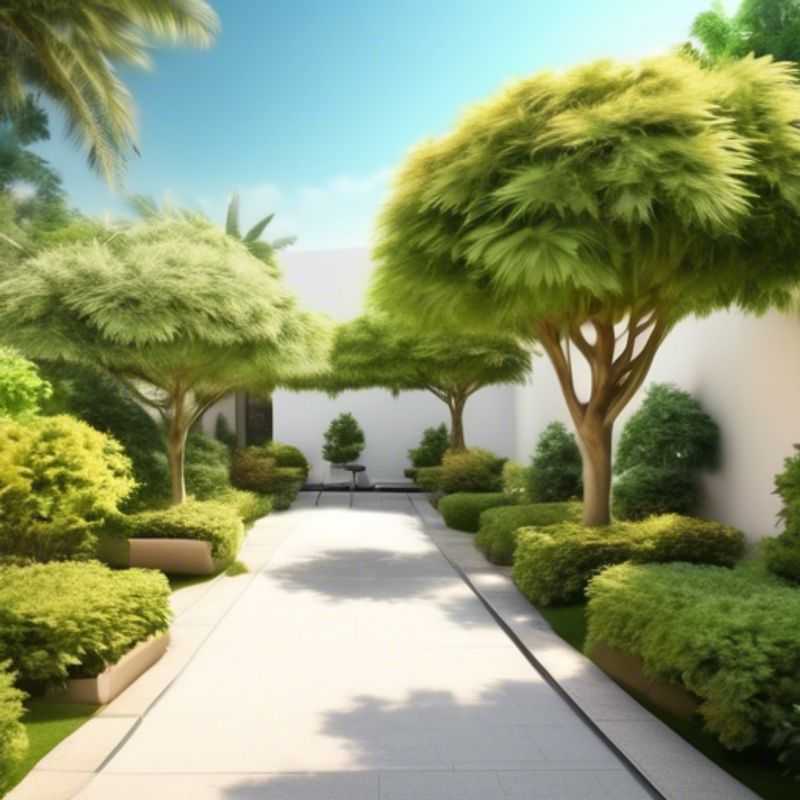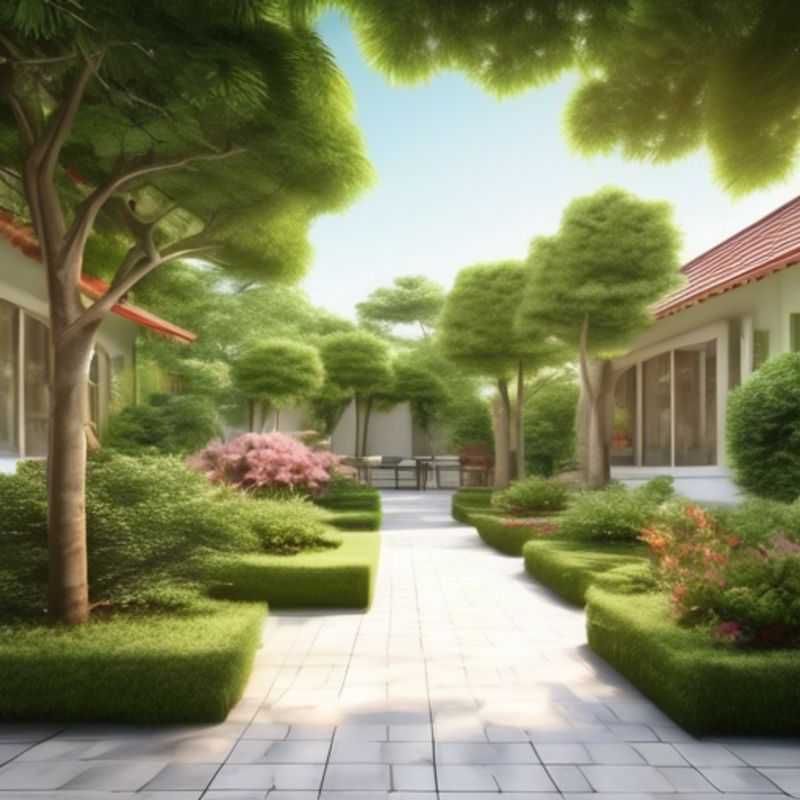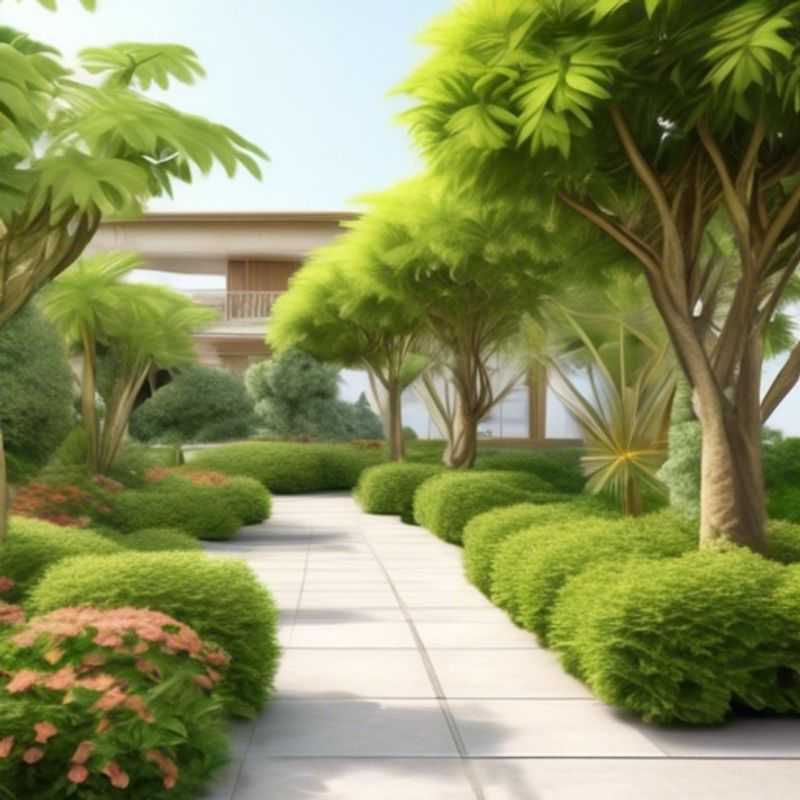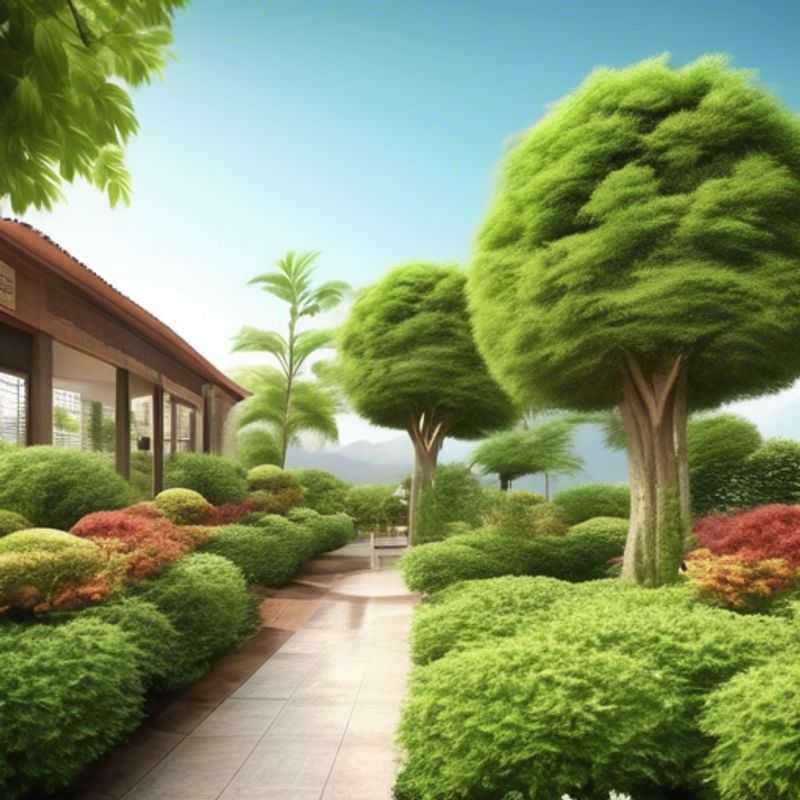7 Tips to Know Before Buying Small Garden Trees For Privacy

7 Key Factors to Consider Before Buying Small Garden Trees for Privacy
Creating a private haven in your garden with small trees is a rewarding project, but it's important to make informed choices for successful growth and long-term enjoyment. Here are seven essential tips to guide you in selecting the perfect small garden trees for privacy:
1. Measure the available space in your garden to choose the right size tree.

Measure for Success: Choosing the Right Tree Size for Your Garden
Choosing the right tree size for your garden is crucial for its healthy growth and your enjoyment. It's all about ensuring you have enough space for its mature size, considering its roots, canopy spread, and overall dimensions. Before planting, take the time to accurately measure the available space.
There are various methods for measuring your garden space. You can use a measuring tape, a simple rope, or even a measuring app on your phone. For a visual guide, create a simple sketch of your garden area, noting any existing structures, walkways, or utilities. Consider the distance from your house, fences, or other trees to determine the tree's potential growth area.
Consult a tree guide or online resources to determine the mature size of the tree you are considering. Look for information about its height, canopy spread, and root system. Factor in the mature dimensions to ensure there's enough room for the tree to flourish without encroaching on other elements in your garden. Remember, trees can grow significantly over time, so plan for their eventual size.
For accurate measurement, mark the spot where you intend to plant the tree and extend the lines in all directions to represent the mature canopy. Consider the space needed for watering and maintenance activities. Ensure the tree will not obstruct walkways, windows, or other essential garden features.
Remember that tree roots can spread extensively underground, often exceeding the canopy's width. Choose a location where roots won't interfere with underground pipes, utilities, or foundations.
If you are unsure about the right tree size for your garden, consult a qualified arborist or landscape designer for expert advice. They can assess your space, consider your preferences, and recommend suitable tree options.

Tree Size Matters: Researching Mature Height and Spread for Successful Planting
Knowing the mature height and spread of a tree is crucial for effective landscaping and urban planning. It ensures you choose trees that fit your space and won't cause issues with power lines, structures, or nearby plants. To research the mature height and spread of different tree species, you can use a variety of resources.
Start with trusted online resources. Websites like Arbor Day Foundation, Missouri Botanical Garden, and The National Arbor Day Foundation offer detailed information about various tree species. These websites often have search functions to find specific trees, providing information on their mature height and spread, along with other characteristics like growth rate, leaf color, and sun exposure preferences.
For a more visual approach, explore online databases like PlantFiles. This database allows you to search for specific tree species and view user-submitted photos showing their mature size and shape in different landscapes. This can give you a realistic idea of how the tree will look in your own space. When researching online, always verify information from multiple sources to ensure accuracy.
Consider consulting local nurseries and garden centers. These experts can provide specific information about trees that thrive in your local climate. They might offer brochures, pamphlets, or websites with detailed information about different tree species commonly available in your area. Some nurseries may even have interactive displays or maps showcasing trees at their mature size.
Ultimately, the most accurate information comes from observing mature trees of the species you're interested in. Take walks in your local parks or botanical gardens to see these trees in their natural environment. This firsthand observation will give you a sense of their size and shape, helping you visualize how they will fit in your landscape.

Sunlight and Soil: The Foundation of a Thriving Garden
Before you start planting, understanding your garden's sunlight and soil conditions is crucial for success. This information will help you choose the right plants for your space and ensure they thrive.
Sunlight: Observe your garden throughout the day to determine how many hours of direct sunlight each area receives. This will help you choose plants that thrive in full sun, partial shade, or full shade. For example, tomatoes and peppers love full sun (6+ hours), while leafy greens prefer partial shade (4-6 hours).
Soil: You can get your soil tested by a local extension service for a comprehensive analysis, but you can also get a general idea of its type yourself. Dig a small hole, observe the color, texture, and drainage. Dark, crumbly soil suggests rich, fertile soil. Clay soil is heavy and dense, while sandy soil drains quickly. Soil testing kits are also available at garden centers.
Soil Amendments: Improve your soil based on your testing results. Adding compost, manure, or other organic matter can enrich the soil with nutrients and improve drainage. Sandy soil may need amendments to retain moisture, while clay soil might require amendments to improve drainage. These amendments are typically available at garden centers or online retailers.

Planting for Success: Choosing Native Trees for Optimal Growth
Choosing trees native to your local climate is crucial for sustainable, low-maintenance landscaping. Native trees are adapted to the soil, rainfall, and temperature patterns of your region, making them more resistant to pests, diseases, and drought. This means less water, fertilizer, and pest control, saving you time and money in the long run.
Here are some of the key advantages of choosing native trees:
They thrive naturally in your environment, requiring less maintenance and care. They provide habitat and food for native wildlife, promoting biodiversity. They are often more drought-tolerant, reducing your water consumption and reliance on irrigation. They are naturally pest-resistant, reducing the need for chemical treatments.
To identify native trees suitable for your area, you can consult with your local nursery or extension service. They can provide guidance based on your specific location and soil conditions. You can also research online resources dedicated to native plants and trees in your region.
While the initial cost of purchasing native trees might be slightly higher, the long-term benefits, both ecological and economic, make them a wise investment. Choosing native trees for your landscaping is a simple yet impactful way to contribute to a more sustainable and resilient environment while creating a beautiful and thriving space.

Choosing the Right Trees for Privacy Screening: A Practical Guide
When selecting trees for privacy screening, consider their mature size, growth rate, and suitability to your climate. Fast-growing trees like Leyland Cypress or Thuja Green Giant provide quick privacy, but require regular pruning for shape. Deciduous trees offer seasonal privacy, allowing sunlight in winter. Evergreen trees like Arborvitae or Spruce offer year-round privacy but can require more maintenance.
Plant trees at the appropriate distance to create a dense screen. Consult local planting guides for recommended spacing. This will ensure they grow into a cohesive barrier. Consider the mature height and spread of the trees. You may need to prune periodically to maintain desired shape. Tree removal and replacement can be costly, so careful selection is crucial.
Before planting, assess the soil conditions and sunlight levels. Some trees thrive in full sun, others in shade. Select trees that thrive in your specific climate and soil type. Consider the impact of roots on existing structures, like underground utilities or walkways. Ensure the chosen tree is compatible with your landscape.
Planting and maintenance costs can vary depending on the tree species and size. Research local nurseries and landscaping companies for pricing. Factor in the cost of soil amendments, fertilizer, and ongoing care, including pruning and pest control. Consider the long-term costs of ownership, such as potential tree removal or replacement.
For best results, seek guidance from a qualified arborist or landscape professional. They can offer expert advice on species selection, planting techniques, and ongoing care. Remember, a well-planned and maintained privacy screen enhances your property's value and beauty.

Plan for the Long Haul: Maintenance and Pruning for Sustainable Landscapes
Planning for long-term maintenance and pruning is crucial for the health and longevity of trees and shrubs. It ensures their continued beauty and functionality while mitigating potential hazards. This plan should consider factors like species, age, location, and intended use. It involves regular inspections, preventative measures, and professional interventions as needed.
Regular Inspections: Routine checks are essential to identify early signs of disease, pests, or structural issues. Inspecting for dead or diseased branches, cracks, or leaning is important. Observing foliage and growth patterns can also provide valuable insights.
Pruning: Proper pruning techniques are crucial for maintaining tree health and shape. Removing dead, diseased, or damaged branches ensures the tree's energy is directed towards healthy growth. Pruning can also enhance aesthetics, improve light penetration, and reduce the risk of branch breakage.
Fertilization: Nutrient-rich soil helps trees thrive. Applying appropriate fertilizers, based on soil analysis, can address specific nutrient deficiencies. Consult local experts for recommendations on fertilizer types and application schedules.
Pest and Disease Management: Identifying and addressing pest and disease infestations early is essential. Utilizing integrated pest management (IPM) techniques that minimize chemical interventions is encouraged. This may involve manual removal, biological controls, or selective use of pesticides as a last resort.
Safety Measures: Ensuring the safety of both trees and people is a priority. This involves assessing potential hazards like dead or weak branches that could pose a risk. Hiring certified arborists for risky tasks such as pruning tall trees is crucial.
Professional Services: Depending on the complexity and scope of maintenance, engaging professional arborists might be necessary. They possess specialized knowledge and equipment for tasks like tree removal, major pruning, and root treatments.
Cost Considerations: Planning for the long-term maintenance and pruning of trees and shrubs involves budgeting for various services and materials. Costs can vary significantly based on the size and location of trees, required treatments, and access difficulties.
By creating a comprehensive maintenance plan, homeowners and property managers can ensure the long-term health, safety, and beauty of their trees and shrubs, while minimizing costs and promoting sustainability.

Planting the Right Way: Why Reputable Nurseries Matter
Purchasing trees from reputable nurseries or garden centers ensures you get healthy and well-established plants that are more likely to thrive in your landscape. Reputable nurseries are committed to quality, offering a wide selection of species and varieties adapted to your local climate and soil conditions. They also provide expert advice on proper planting and care, significantly increasing your success rate.
Look for nurseries that have a good reputation, positive customer reviews, and affiliations with professional organizations. Consider visiting the nursery in person to assess the quality of their stock and the knowledge of their staff. Ask about their guarantees and warranties to ensure you're protected in case of problems.
When selecting a tree, choose one that's healthy, free from pests or diseases, and has a strong root system. Inspect the leaves and branches for any signs of damage or discoloration. Look for a balanced shape with a strong central leader.
Purchase trees at the right time, often in the fall or spring when they're dormant and less susceptible to stress. Consider the mature size of the tree and ensure it has enough space to grow. Factor in the cost of delivery and planting if necessary, as these can add to the overall expense.
Reputable nurseries often provide planting and care guides with your purchase. Be sure to follow these instructions to maximize your tree's chances of survival and growth. Invest in proper care, including watering, fertilizing, and pest control, for a healthy and long-lasting tree.
